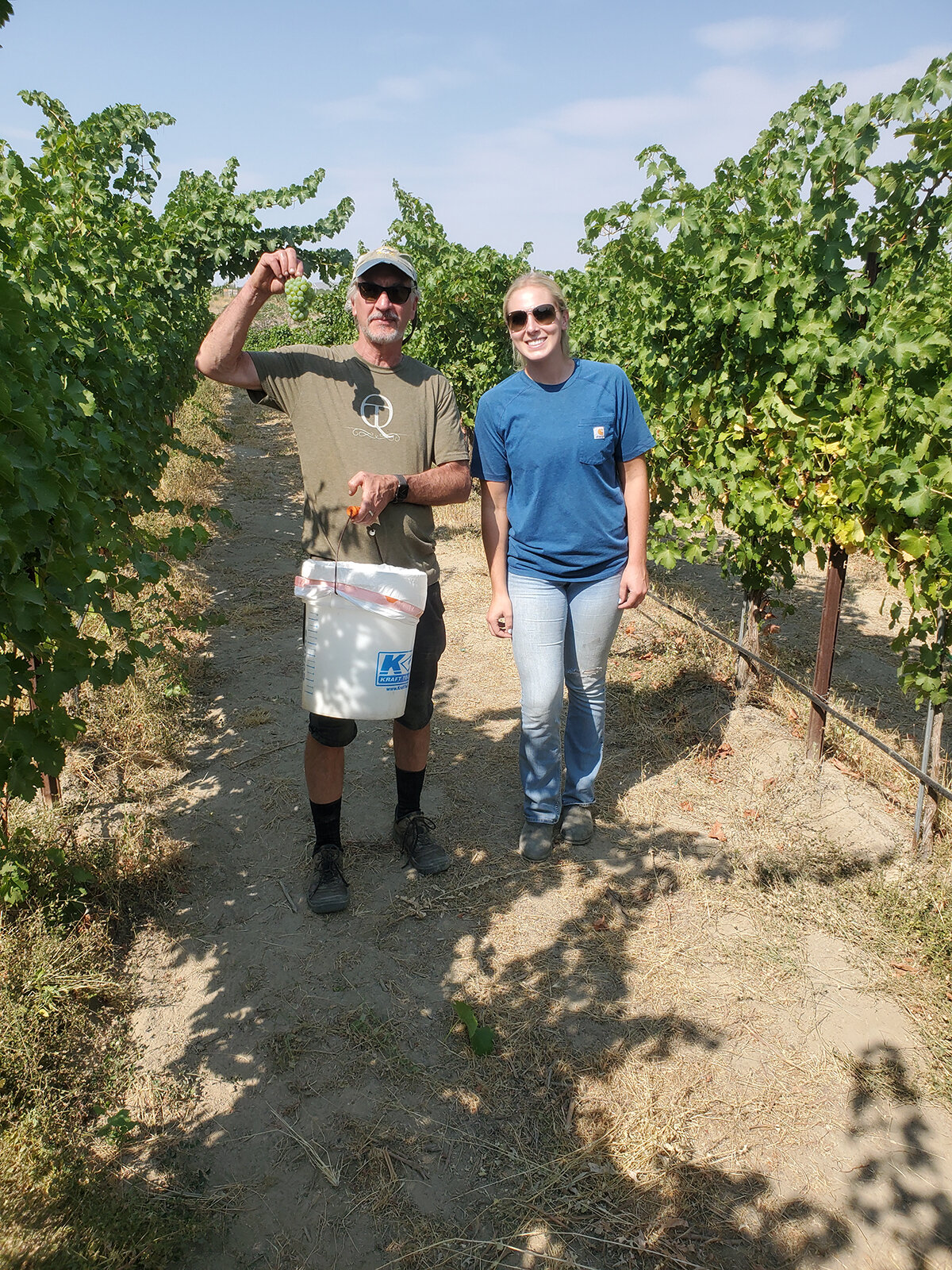You Gotta Know When to Hold ‘Em, Know When to Pick ‘Em, Part 1
How do we know when to pick winegrapes? Well, it’s not quite gambling- though it does take a little bit of science, a little bit of art, and a whole lot of sweet-talking the powers that be (in this case, Mother Nature.) But one thing’s certain, knowing when to pick our grapes is one of the most important decisions we must make as winegrowers.
“Picked at the peak of ripeness” or whatever every food company every says.
As an estate-grown winery, we try to be as minimal as possible in the cellar, meaning that our winemaking style is truly established in the vineyard. We allow the vintage to dictate the direction of our wines and try to keep a farm-to-table style of winemaking. We like to say that we “massage the grapes into each bottle rather than forcing them into a mold.” Does this mean that our wines may vary from year to year? Totally possible, even probable. But it also means that they each get to shine in their own unique way depending on the vintage. Upholding this philosophy means that the entire growing season and each decision we make along the way determines how the grapes will ripen and ultimately determines the flavor profiles in our portfolio and those of the customers who have entrusted us with their fruit as well. We have worked hard to maintain this style of winemaking, and while we continue to fine-tune and perfect our craft with each vintage, honestly, not much has changed since year one—it’s still a “grow the best grapes to make the best wine” approach.
As Manager of Vineyard Operations, Patrick spends his days driving from vineyard to vineyard. The ol’ 2008 Sierra is sorely in need of a wash and a radio, but he is too busy taking phone calls to notice the latter. With more than 60 winery clients and additional managed acreage, it’s anyone’s guess who might be on the other end. This time of year, Patrick rides the vineyard rows (on a 4-wheeler, not a horse, obviously, since we all know how he feels about horses), checking the vines to see how the grapes are ripening. Sure, there’s a lot you can infer from the way the grapes look and taste, but sampling plays a major role for us as well.
We recently added a viticulture technician (or “vit tech” if you want to sound like you’re in the know) to our team to assist with the growing volume of vineyard tasks. Ella Vincent was a huge pick up for us (despite being a Coug- but we don’t hold it against her) and has jumped into harvest duties with gusto. She’s out there every morning grabbing samples from each of our thirteen vineyard sites to track ripening progress.
Sampling. “You keep using that word. I do not think it means what you think it means.” While it’s true that we’re not just out in the vineyard stuffing our faces with grapes, we are indeed snipping grape clusters to compose the representative sample of the site. That means we are out there filling gallon Ziplocs (name-brand because that’s what they sell at Costco) with approximately twenty clusters per bag. The clusters in each bag are always the same variety and from the same block.
We don’t sample every variety/block every day (that would just be overkill, and honestly, our “Lab Guy” would probably quit), but we do make sure we get to each vineyard daily. That provides us with valuable insight to inform our own winemaking team as well as our winery and vineyard clients. And while the numbers are an important data point, many winemakers (including Matt) will still head into the field to evaluate the fruit. Each winemaker has their own set of personal considerations that will help them decide when the grapes are most likely to fulfill their winemaking objectives, thus taking us back to the “art” of winemaking.
We then haul all those bags back to the winery where “Lab Guy” Steve gets into the zone for the super science-y step. More on that to come in Part 2!
One variety per bag, one block per tote, or else!






